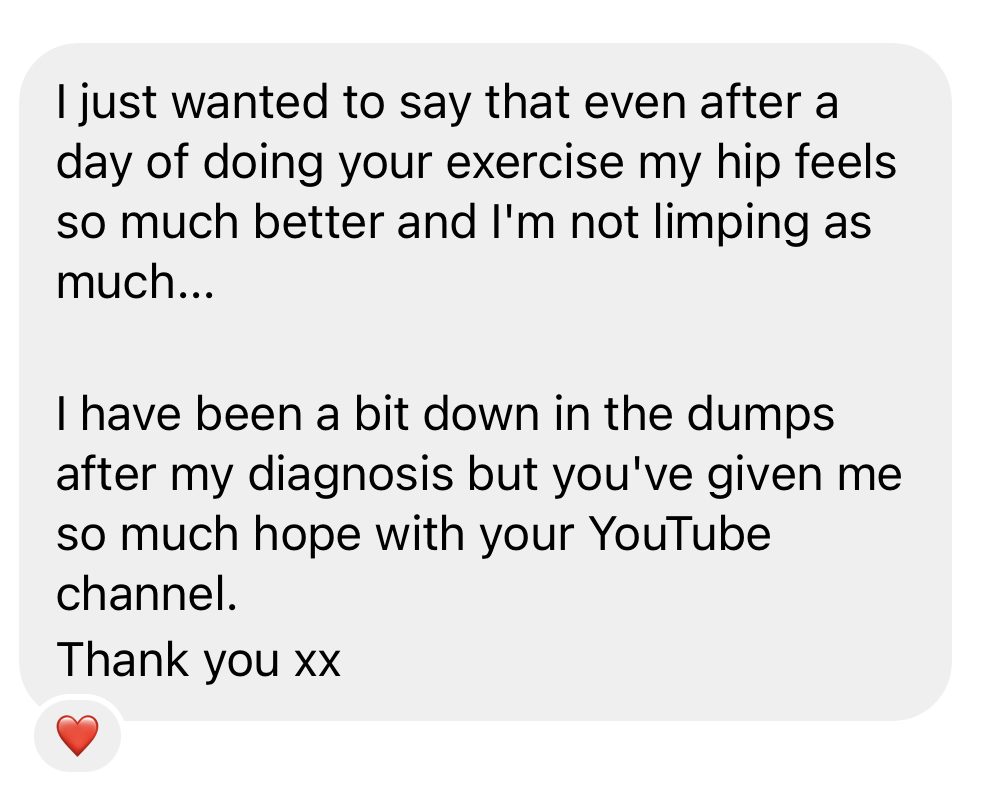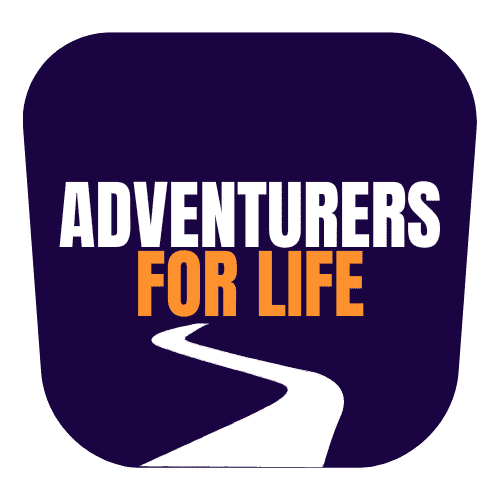How is osteoarthritis diagnosed? Do you have a suspicion that your joint stiffness, swelling, and pain may be caused by osteoarthritis? Not sure what comes next? Getting a diagnosis can be a scary process, but is absolutely necessary to understand how to treat, stop progress of a disease, and ultimately get you back on track to a life full of adventure.
If you are experiencing new onset joint pain, stiffness, or just something in your joint(s) feels off- figuring out what is going on is important.
Assuming and/or just trying to forget about the symptoms can actually lead to increased severity of symptoms if they aren’t addressed…
I meet people all the time wishing they had taken action sooner but instead assumed that osteoarthritis is just “normal” as you get older.
The reality is, the quicker you know what is going on, the quicker you are able to take action to reduce the symptoms and slow the progression.
Here are 4 ways doctors and other medical professionals use to rule in or rule out osteoarthritis.
1. Look at your symptoms
The first thing when diagnosing osteoarthritis, or truly any disease, is to look at what your symptoms are, when they occur, how severe they are, etc.
It helps to pay close attention to the things that cause the most pain, limitations, or impede your daily life. These are essential to being able to relay that information to your doctor so that they can get a clear picture of what is going on with your individual case.
Common symptoms of osteoarthritis include:
- Stiffness in the morning that relieves within about 30 minutes
- Localized joint pain, usually with movement
- Loss of range of motion in affected joint
- Intermittent swelling, usually after activity or long periods of inactivity
Find out more about the common symptoms in this article.
Symptoms play a pivotal role when looking at how to diagnose osteoarthritis so knowing the common ones can give you vital information.
Please do not let someone base a treatment decision on your images alone. Symptoms play a vital role in the diagnosis process and need to be discussed.
Tip to easily track your symptoms
If you suspect osteoarthritis may be at the root of your symptoms, try and keep a journal of what is going on.
Note when the symptom goes on, how bad it is, and when it goes away/things you do to make the symptoms less severe. It is important for clinicians to get a clear story of what is going on so that they may begin to rule in and rule out different diagnoses they suspect.
With a journal you will better be able to track trends associated with your symptoms. For example, if you notice after you walk a certain distance or on concrete more pain or stiffness- associating these two things will help tremendously with the treatment plan.
2. Physical Exam by a professional
When you visit a doctor, one of the first questions they usually ask is about your symptoms. Hopefully, with that last bit of information, you are equipped with the knowledge and your journal of how your symptoms manifest so that you are able to tell your whole story to the doctor.
It helps to be prepared when you go to appointments. The more information you have on how you’ve been feeling and trends you’ve been noticing- the better.
They will also likely ask you about previous medical history and figure out if there are any identifiable risk factors for OA in your life. You may be more at risk for OA if you have:
- family history of OA
- history of a joint injury or surgery such as ACL tear, meniscus injury, labral tear in the hip, etc.
- chronically high blood pressure
- uncontrolled diabetes
- long history of smoking
There are lots of risk factors that are associated with osteoarthritis including family history, level of activity, other health conditions like diabetes, among others.
Communication is extremely vital between you and the doctor or medical professional you are seeing. If you aren’t sure who to see to help you with your joint pain- read this article.
What to expect
Say you made an appointment to address knee pain you have been experiencing. A physical exam may be part of the process on how to diagnose osteoarthritis.
The doctor will likely assess your knee and other joints for various hallmark signs of OA, some that you yourself may not have even noticed!
They will visually examine the joint(s) for swelling, asymmetry from side to side, different bony contours, etc. They will also feel your joint for warmth, tenderness, bony protrusions or knobs, muscle wasting (atrophy), pain, and crepitus.
They will also ask you to move the joint through the range of motion and then passively repeat this to assess your range of motion.
They will look at the way you walk (your gait) to assess for compensations or abnormalities.
They will then take this information and decide on the next step.
3. Imaging
Imaging such as x-rays, MRIs, and other scans are commonly ordered to help diagnose osteoarthritis.
But, images on their own, don’t particularly give the whole picture.
Research has actually shown that just because you having findings of narrowing of the joint space, and wear to your cartilage- it doesn’t automatically mean pain.
"The prevalence of knee osteoarthritis features on MRI in otherwise healthy, asymptomatic, uninjured knees is high—up to 43% in adults aged ≥40 years."
Culvenor et al, 2019
This means that someone could have the exact same x-ray you do and may not experience any pain at all.
This is why your own personal history, signs and symptoms are the most relevant piece of information. This will give more insight into how to treat, stop progression, and return to your active lifestyle.
Imaging is simply an adjunct test to one’s history to give even more insight to the condition and is very useful in most instances.
What imaging can you expect?
The two most likely methods of imaging are X-rays and MRIs.
X-rays are typically used for bone and MRIs are typically used to look at soft tissues such as muscles, tendons, and ligaments.
On the x-ray the clinician will be looking for the most hallmark signs of OA: joint space narrowing, osteophyte formation (bone spurs), subchondral sclerosis (thickening of bone), and cysts (Braun, Hillary J., and Garry E. Gold, 2012).
The MRI will give a more in depth look at the muscles surrounding the affected joint as well as the cartilage damage that may occur with osteoarthritis.
Some level of caution
I often hear people seeking out an MRI or an x-ray to “see what is going on inside their joint”. The problem with this is that many of these images are unnecessary and can actually negatively impact your pain.
You cannot “unsee” your image once you get one. If the image is described or even looks worse than originally thought, you may actually begin to experience more pain…
This video below goes into when you should consider an MRI and when one may not be necessary.
4. Blood tests, Arthrocentesis
Blood tests and/or arthrocentesis (pulling fluid out from an affected joint with a needle) may be used in order to primarily rule out or exclude other diagnoses that may mimic osteoarthritis.
The primary one they will be looking for is rheumatoid arthritis. It is important to rule out rheumatoid arthritis as it does require different routes of treatment if discovered.
When looking at how is osteoarthritis diagnosed, there aren’t any specific blood markers that indicate the condition. There are certain things such as levels of inflammation, A1C, vitamin D, and other options for testing that could aid in ruling out other conditions and helping to create a treatment plan that may be necessary.
So I have osteoarthritis, now what?
If you have been told you have osteoarthritis based upon these above tests, I’m so glad you’re here. My main mission at Keep the Adventure Alive is to show you there is hope for an active, adventurous life with osteoarthritis. You aren’t alone on this journey. You are in the right place.




In order to find relief from osteoarthritis and make adventures possible again, movement plays a vital role. Learning how to regain strength, improve balance and increase your mobility can open so many doors while relieving pain.
The key is making sure you have the right movements that actually reduce pain instead of increasing it.
Your next step is to try the FREE 4 Day Jumpstart your Arthritis Adventure Challenge. You will get 4 days of arthritis friendly workouts that will help you see which movements can benefit your joints the most.
You can sign up below ⬇️
References
Braun, Hillary J., and Garry E. Gold. “Diagnosis of osteoarthritis: imaging.” Bone 51.2 (2012): 278-288.
Guest writer and contributor: Kayci Smith, SPT at the University of Utah
Alyssa Kuhn
Disclaimer: This post is for general informational purposes only. It should not be used to self-diagnose and it is not a substitute for a medical exam, cure, treatment, diagnosis, and prescription or recommendation. It does not create a doctor-patient relationship between Dr. Kuhn and you. You should not make any change in your health regimen or diet before first consulting a physician and obtaining a medical exam, diagnosis, and recommendation. Move Well Age Well, LLC and Dr. Alyssa Kuhn, PT, DPT are not liable or responsible for any advice, course of treatment, diagnosis or any conclusions drawn, services or product you obtain through this post, video or site.

If you are looking to regain your active life but are unsure where to start, join the revolutionary membership, Adventurers for Life. This is a step-by-step path that not only will help you find pain relief but will help you unlock adventure. You’ll get workouts, tests to pass to make sure you are on the right track, community events and MORE.




